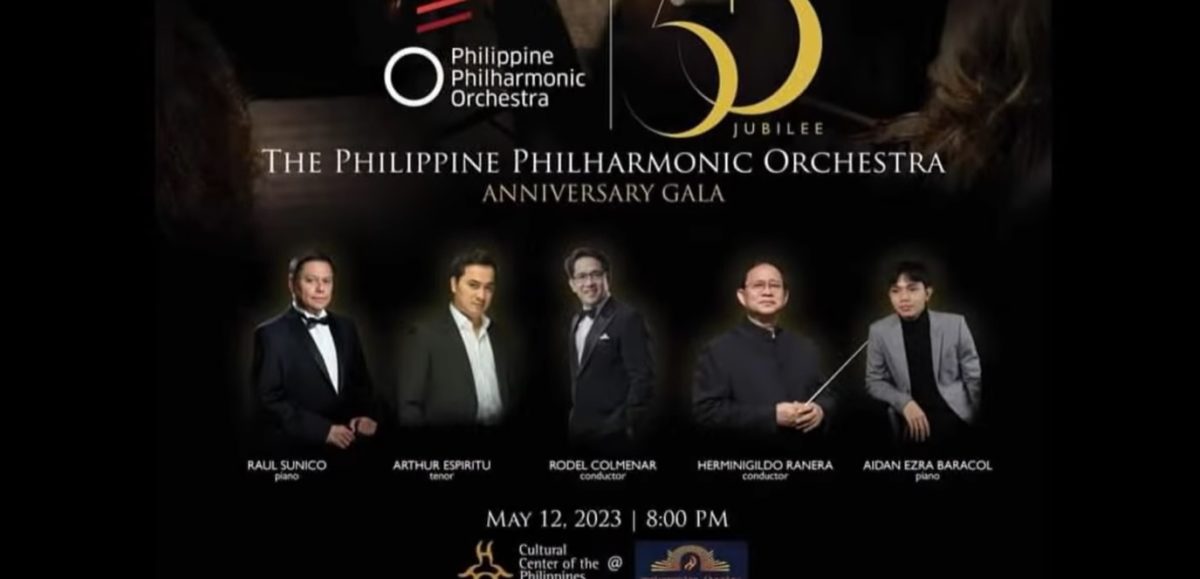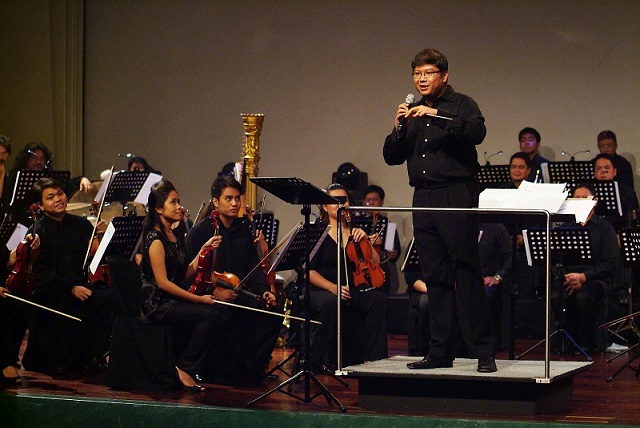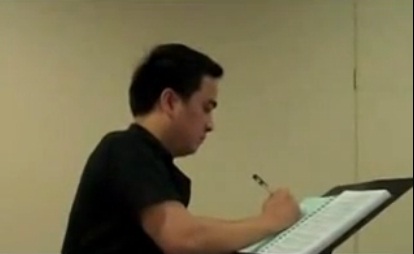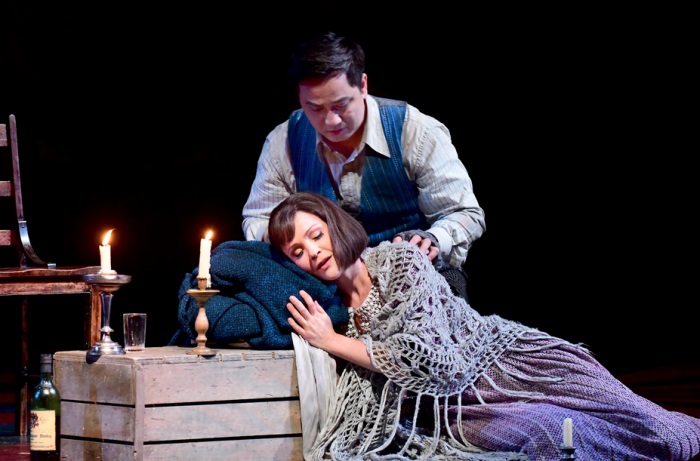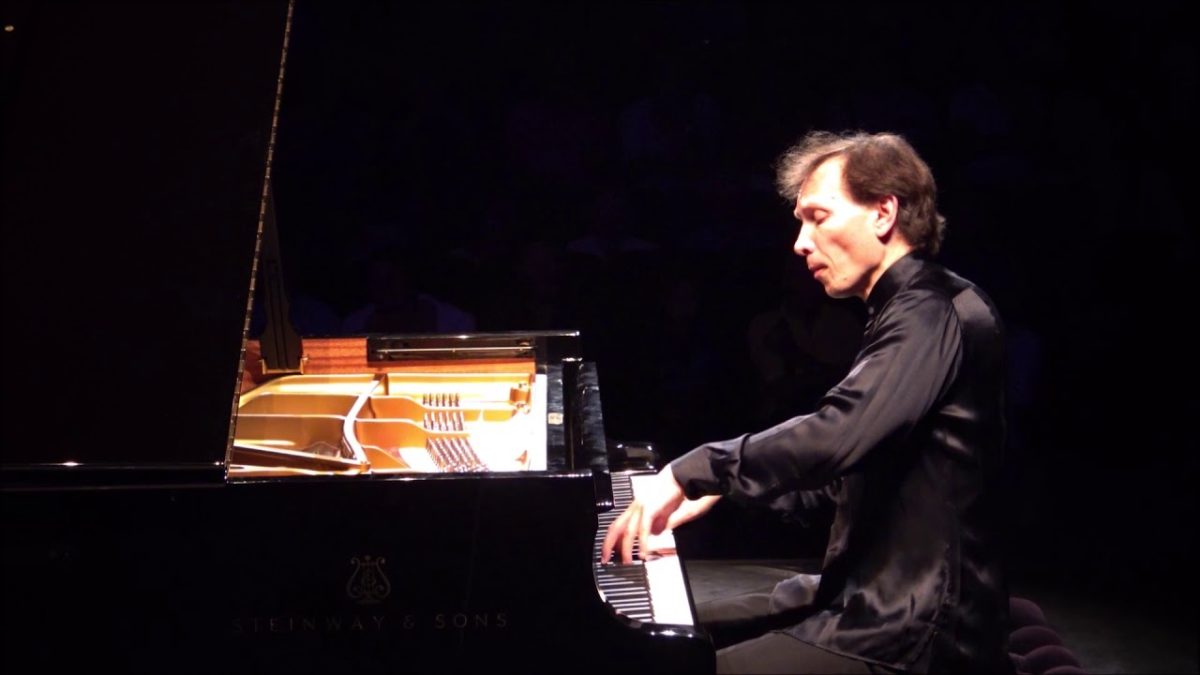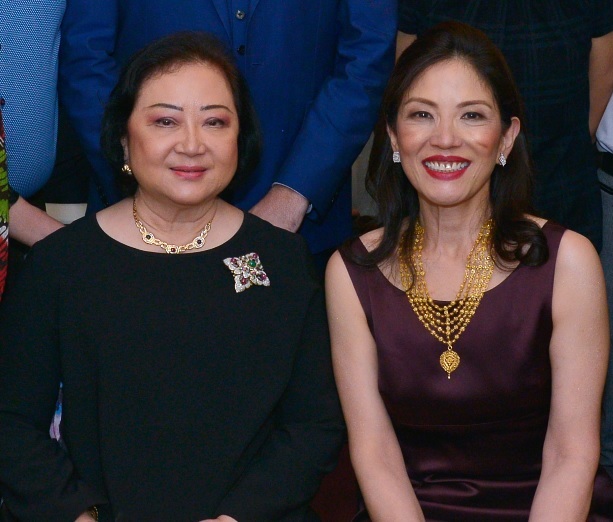Friday night (May 12) at the Manila Metropolitan Theater, the Philippine Philharmonic Orchestra (PPO) observed its 50th year with a commemorative concert partly recreating the 1973 inaugural concert.
The PPO concert opened with Alfredo Buenaventura’s “Bathaluman” Concert Overture ably conducted by Rodel Colmenar.
The music is at once a musical journey to the past when mysterious icons half-muse and half deity (a combination of Bathala and Paraluman) fired the imagination of Filipino composers.
The first part illuminates the dual character of ‘Bathaluman’ and to some degree, the orchestra captured mystic moments of the piece.
The second part dwells on the human qualities of the deity and reflecting on what could be sheer fantasy and or half-truth even as there are lingering doubts of the deity’s demigod status.
The coda had classical nuances with hints of modern musical idiom coming in.
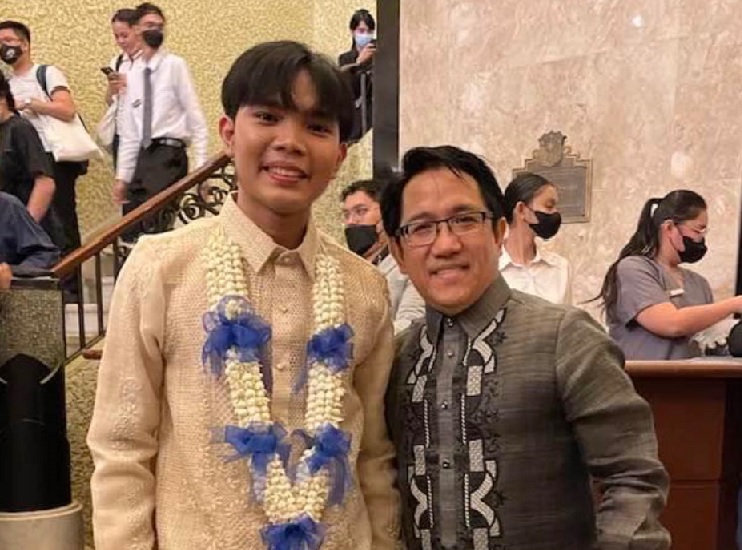
The opening number could have been a nostalgia piece recalling the composer’s idyllic days in Bulacan. It was a fitting opener with musical diorama of the past lingering even on its mysterious finale.
Colmenar acknowledged composer Buenaventura in the audience. But the house lights were such that the audiences only saw a shadow of the composer. He should have been escorted on stage if the theater has no means to illuminate a musical VIP in the audience.
Lucrecia R. Kasilag’s Divertissement for Piano and Orchestra found superb reading from the orchestra under Colmenar.
The interpretation was fresh, even astounding with the presence of pianist Aidan Ezra Baracol as soloist. To my recollection, he was one of the youngest to be heard in this Kasilag orchestral piece. To one’s surprise, he gave the piece a thoroughly fresh outlook and an even more contrasting East-West flavor.
His keyboard talent certainly lent more color and cohesion to the orchestral piece.
The three movements went by dazzling as they were and projected good rapport between soloist and conductor.
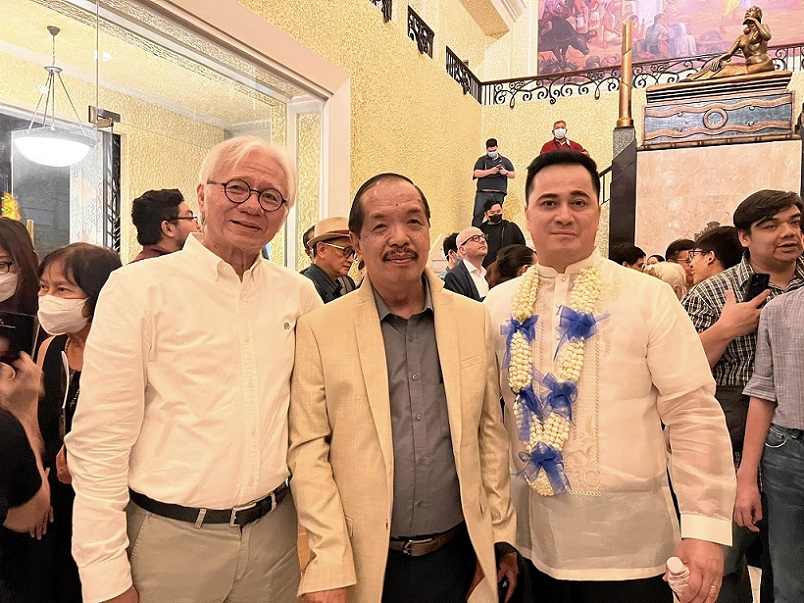
His encore number which was equally dazzling was his own composition called The Smuggler.
Baracol is the young pianist to watch and he augurs well for the new generation of keyboard artists.
The second part opened with the PPO under Herminigildo Ranera and with a distinguished soloist in the person of tenor Arthur Espiritu.
The audience certainly didn’t know what was in store for them in this middle part of the program.
Making a grand entrance in Gounod’s Salut! demeure et pure from Faust, Espiritu heralded what might as well be the most enchanting part of the night.
The voice soared and triumphed over the theater’s not so ideal post-renovation acoustics.The response was a virtual mass uproar over his voice.
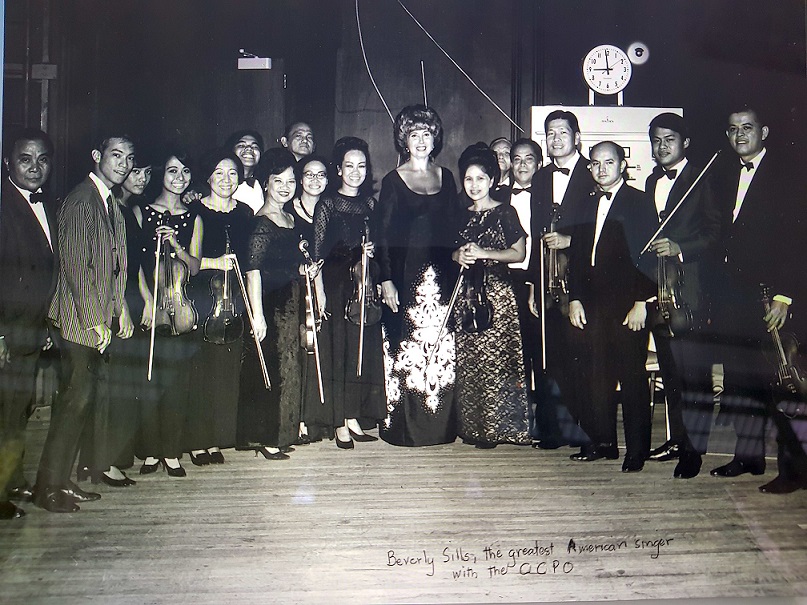
After Che gelida manina (from La Boheme), Espiritu has all but conquered his Met audience with PPO. After an endearing interpretation of Agot Espino’s Kundiman ng Langit, Espiritu and Ranera had the audience at the palm of their hands.
Since the applause wouldn’t subside easily, the tenor obliged with an encore, the ever-popular O Sole Mio by Di Capua.
The audience was in higher spirits not a few gave him a standing ovation even as the last part of the concert had yet to unfold. The audience euphoria was reminiscent of Nelly Miricioiu’s performance at the Met in August 1984.
There is very little in the souvenir program about Espiritu. For the record, he is the first Filipino tenor to sing at the famous La Scala di Milan. In July, he is due to sing the lead role of Verdi’s Don Carlo in Vienna.
With the initial excitement over the opening numbers of Baracol and Espiritu, pianist Raul Sunico’s presence as soloist had become anti-climactic in Gershwin’s Rhapsody in Blue which should have been a fitting finale.
Sunico had all the notes nailed but the popular Gershwin sizzler needed a more vibrant interpreter.
Gershwin’s notes flew in cascading jazz tempo but the soloist simply just skimmed through them. In some parts Sunico caught up with the tempo but he sounded so archaic there was no trace of Gershwin in his interpretation.
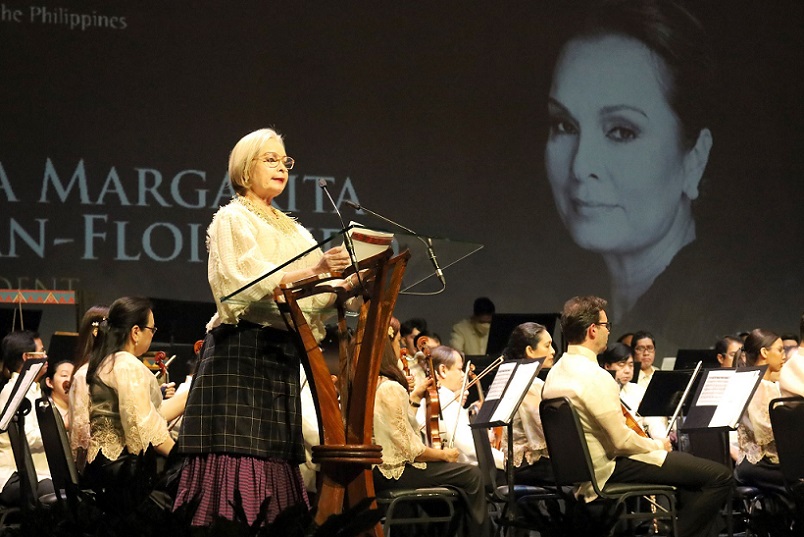
One also didn’t know what to make of his encore piece, Ernani Cuenco’s Bato Sa Buhangin. It is a beautiful piece all right but it certainly doesn’t belong to the night’s grand repertoire. While the melody was familiar, it sounded tawdry, even too banal for musical comfort.
Founded in 1973 as an accompanying orchestra of the Cultural Center of the Philippines, the Philippine Philharmonic — as it was known since 1982 – has evolved since the time of its first music conductor, Maestro Luis Valencia.
For the record, its first concertmaster was Julian Quirit, who is now based in Sydney and has conducted the likes of Luciano Pavarotti and Jose Carreras.
Its winning moments before it became the PPO was of course its first team up with piano prodigy Cecile Licad who in 1975 played three concertos in one evening when the ensemble was still known as the CCP Philharmonic.
It had its first foreign distinguished soloist in the person of American diva Beverly Sills who sang at the Meralco Theater in 1969 under the baton of the PPO founder Maestro Valencia.
CCP President Margie Moran Floirendo acknowledged the help of both public and private sectors in making the PPO what it is today.
She acknowledged a regular PPO patron in the person of Rustan’s Nedy Tantoco.
Indeed, that May 12 PPO concert at the Met was a testimony to the Filipino artistry and creativity.
